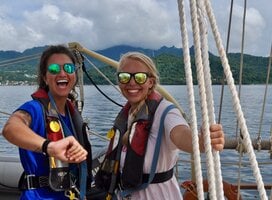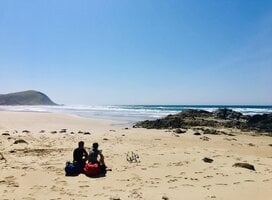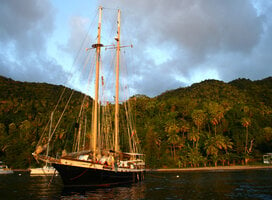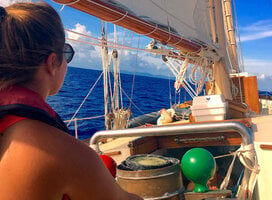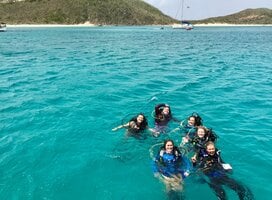Gap Year Sailing Programs
A gap year in sailing is a voyage of discovery. Unlike Magellan, though, you won’t be sailing off the edge of the known world - yours is a voyage of self-discovery as you learn what you’re capable of once you go beyond your comfort zone.
You’ll find that a boat is the perfect place to put classroom theory into real-world practice. The skills and experiences that you have here are easily transferred to nearly any workplace. Collaboration, cultural competency, creative thinking, and problem-solving are all necessary attributes of life aboard a ship and applicable wherever you go after your voyage ends.
A gap year spent sailing will show you more of the world than most people see in their whole lives. So hoist the anchor, throw off the bowlines, catch the following wind, and set sail on a voyage of discovery to create memories that will last a lifetime.
The beauty of a sailing gap year is that you don’t just visit a single place. These unique adventures can take you across oceans and whole regions to experience dozens of countries in a single gap year. Some programs combine several regions while others stick to just one. Below are some of the common regions to consider.
Indian Ocean
Follow in the path of Captain Cook as you sail from Australia to Africa across the Indian Ocean. This route often stops in Indonesia, Madagascar, and more remote islands such as Christmas Island and Mauritius. While sailing across this southern ocean, you may have the opportunity to dive in some of the world’s most bio-diverse waters and visit populations that seldom receive outsiders.
Caribbean Sea
The waters once plied by the likes of Blackbeard and Cap’t Henry Morgan are still the place of adventures for modern-day seadogs like yourself. As you sail past volcanic peaks and coral reefs on azure-blue water, you’ll have the opportunity to experience a side of the Caribbean that cruise ship passengers seldom do. While sailing in the Caribbean, you can work on ecological management projects, study the region's dynamic history, and learn from a blending of cultures that exists nowhere else.
New England and Canadian Maritimes
While sailing through the green-grey seas off the rocky coast of New England and eastern Canada, you’ll follow in the tradition of generations of sailors who came before you. Once a major source of the world’s cod supply, these over-fished waters have become a real-world laboratory for research into how to develop sustainable fishing practices. In this region, you’ll call into ports ranging from large cosmopolitan cities to quaint seaside towns and experience a side of life in the Atlantic that few get to these days.
Mediterranean Sea
In the Mediterranean Sea, you'll sail along routes first charted by the Phoenicians, Romans, and Crusaders. Ports of call include Italian cities renowned for their history and art, bucolic Greek islands strewn with ruined temples, and the ancient coastline of the Holy Land. Although it may have taken Odysseus a decade to sail home across this sea, your shorter epic will be no less adventurous (minus the sea monsters, of course).
General tips
Previous sailing experience is not usually necessary for a sailing gap year. You will, however, be expected to quickly learn most of the shipboard duties. This includes handling sails, navigation, cleaning, cooking, and more. Be prepared to be an active member of the crew as your ship won’t be able to sail smoothly without everyone pitching in.
Costs
How much a sailing gap year costs varies greatly depending on the type of program and the length of the voyage. A program lasting a few weeks may cost $5,000 or more. Months long adventures may be as much as $20,000, especially if they involve college credit or other course-work.
Visa
Visa requirements will vary depending on where your voyage takes you. Your program will inform you of which visas you’ll need. Make sure you obtain your visas well in advance of embarkation.
Housing
Housing will consist of a berth aboard your boat. Don’t expect anything fancy. You’ll likely have little more than a bunk and a small storage locker in a two or three-person cabin. Given the limited size of your living space, expect to be in close quarters with your crewmates at all times with little real privacy.
Health & Safety
Living aboard a ship means that you can’t always count on having medical facilities nearby. You may be asked to provide a note from your doctor certifying that you are in good health before being accepted into your program. Most programs include medical emergency insurance as part of their fees. See what it covers and what it doesn’t when making your decision.
There have always been dangers inherent in sea travel. Always follow the directions of your instructors. Their top priority is your safety. Don’t let your guard down when you go ashore either. You will be briefed on potential risks whenever you arrive at a new location and should take these seriously.
